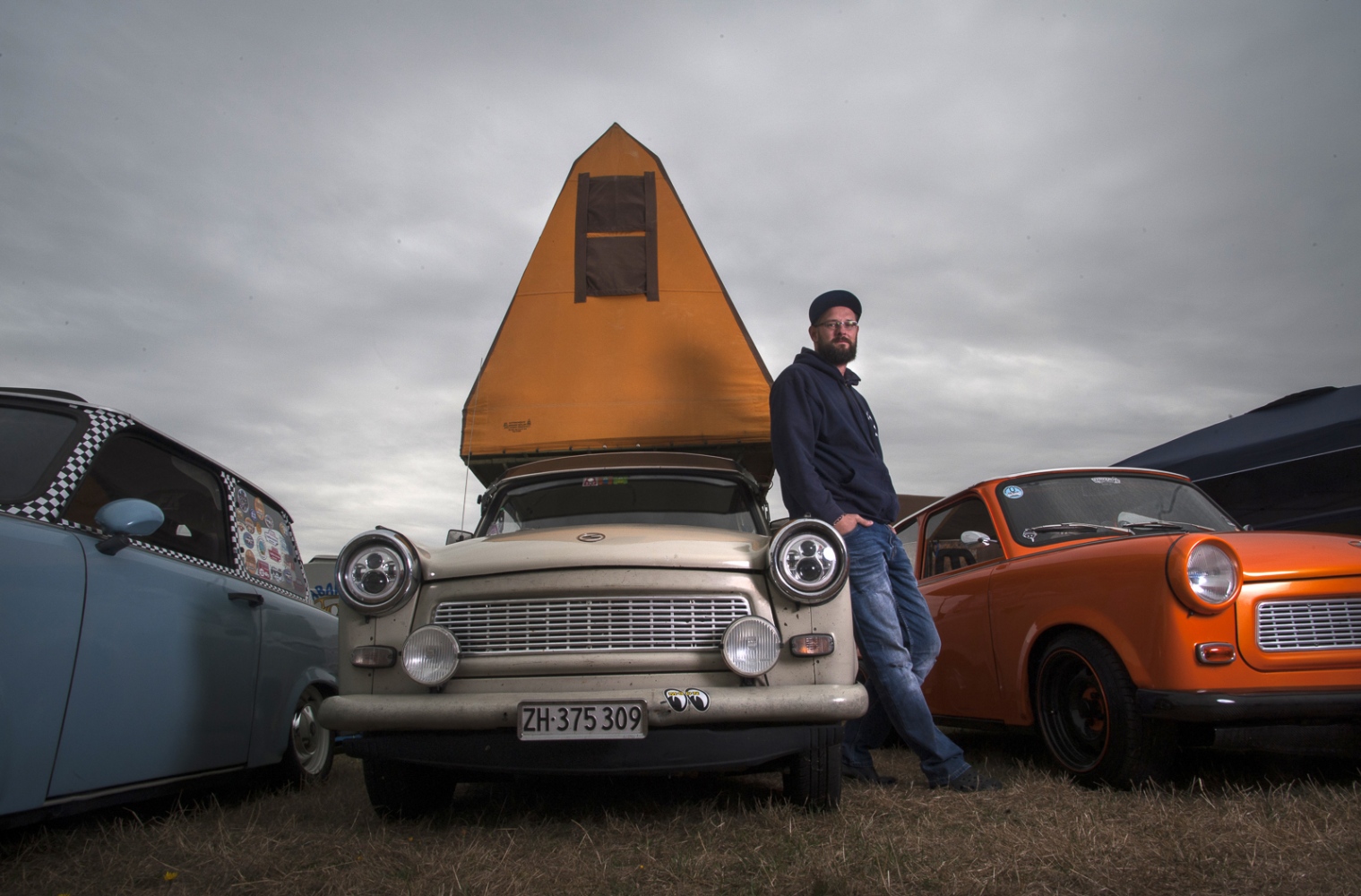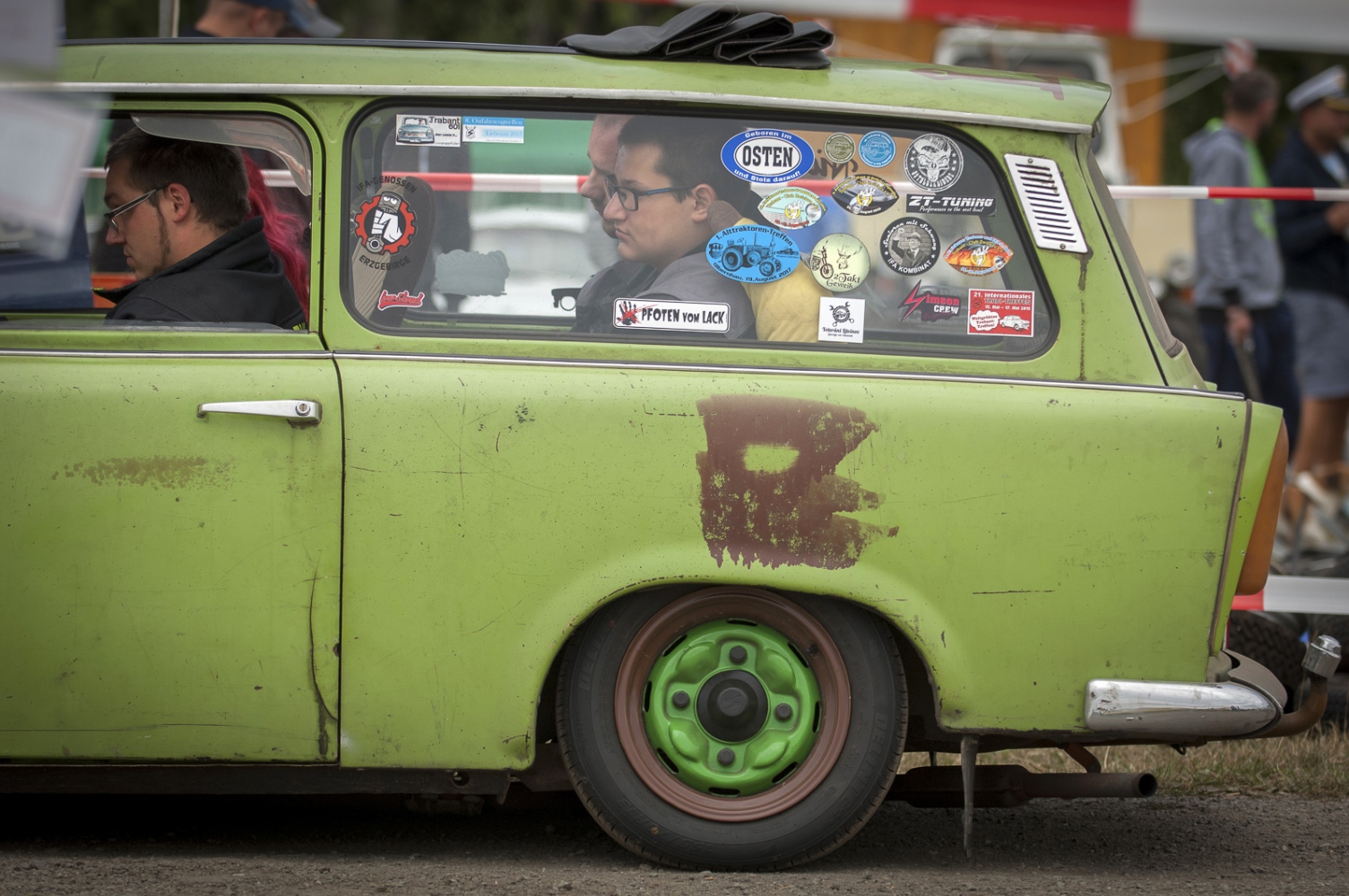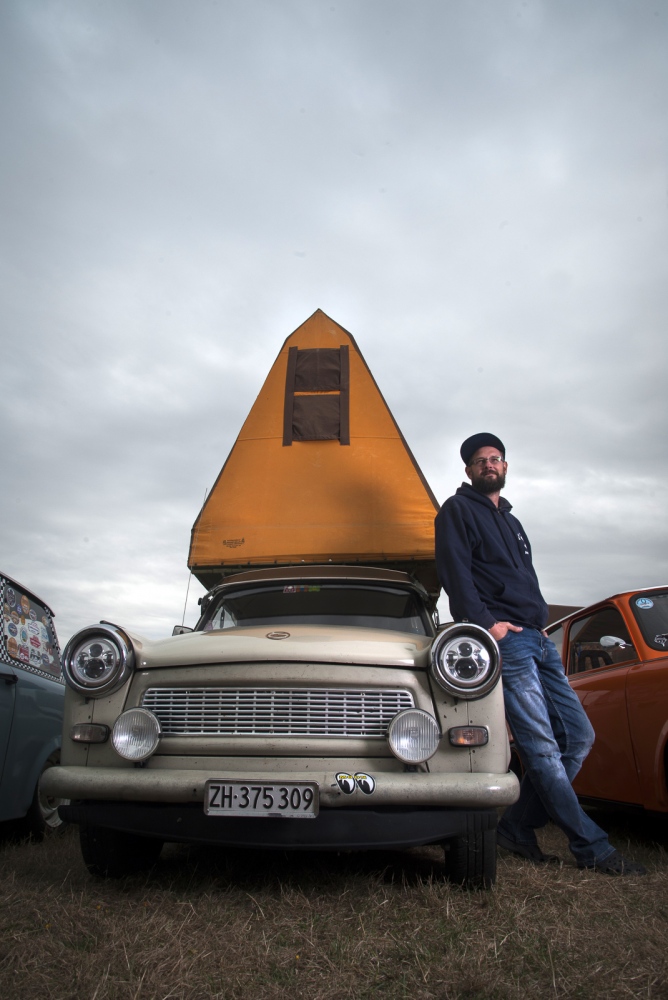Public Story
Go Trabi Go, Zwickau, Germany
The Iconic East German Trabant. All though the first Trabants rolled out of the VEB Sachsenring Automobilwerke Zwickau factory in Saxony , Eastern Germany on 7 November 1957. This year the Horch Museum in Zwickau (The Trabant Museum) celebrates the official 60 years of the serial/mass production of the Trabant. The Trabant stopped production in1990 after German re-unification. This iconic car is often seen as symbolic of the former East Germany and the disintegration of the Eastern Bloc in general. Trabants were constructed from a hard plastic body mounted on a one-piece steel chassis and not from compressed cardboard as is often rummoured. It had front-wheel drive, a transverse engine, and independent suspension which was an unusual features at that time. Called "a spark plug with a roof", 3,096,999 Trabants in a number of models were produced over nearly three decades with few significant changes in their basic design. To put that into perspective there were only just over 1 million Morris Minors made. The most widely produced model was the P601 buit at Zwickau from 1964 onwards. An open top, jeep-like ‘Kübelwagen’ was produced for military and forestry use such as for patrolling the ‘inner’ East German border. In later years a civilian version of the Kübelwagen was produced called the Tramp. Around 12,000 Kübelwagen and Tramps were made. Other versions such as a van and a camping version (seats folding down to make a bed) were made in very small numbers Zwickau was the town in which the East German Iconic car was built for its entire production life. For a while the Trabi fell out of favour; many were simply abandoned by their East German owners when migrating westwards, others were scrapped when cheap second hand cars from West Germany became freely available. In the early ‘90s it was possible to buy a Trabi for a few Deutschmarks. Prices later recovered as the Trabi gained ‘cult’ status. Today Trabants are starting to fetch prices equivalent with other classic cars
































